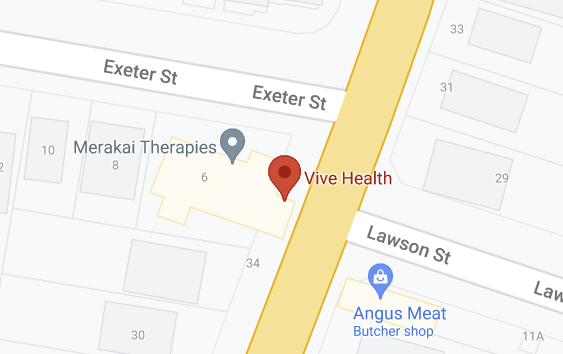by Matt Steinacher (Clinical Naturopath & Sports Nutritionist)
Nutritional periodization (progressive cycling) is a contemporary extension of training periodization (Burke, Jones, Jeukendrup, & Mooses, 2019; A. Jeukendrup, 2014; Stellingwerff, Morton, & Burke, 2019). Around 500mg of glycogen is normally stored within muscle, liver and blood. Originally considered a molecule for storage of energy, progress in glycogen research shows it be an important modulator and regulator of cellular signalling molecules (Philp, Hargreaves, & Baar, 2012). When strategically restricting glycogen storage for a number of training sessions a week, athletes may leverage training-adaptations such as increasing the size and number of mitochondria (biogenesis).
In relation to endurance training, there is a shift towards a greater capacity for athletes to produce adenosine triphosphate (ATP) from lipids at an intensity that would normally utilise glucose. This results in a sparing effect, allowing higher-intensity metabolism of glucose (i.e., increased lactate threshold). It is recommended athletes limit carbohydrates (CHO) intake for between 30-50% of their training sessions. Whilst still maintaining adequate glycogen, to complete training tasks, in order to leverage training adaptation. Athletes may achieve this through training multiple sessions per day, restricting CHO following the initial session or restricting CHO after a depleting session in the evening. In this way, ‘sleep-low (low glycogen storage), train-low’ prior to breakfast the following day is easy for athletes to apply as it doesn’t interrupt daily activity or social feeding patterns. While train-low practices provide an evidence-based approach for performance gains, limitations apply. For example, not all research supports train-low practices (Impey et al., 2018). Furthermore, excessive training in a limited CHO state has the potential to compromise training intensity and possibly immunity (Impey et al., 2018). Studies have also shown CHO oxidation to be compromised (via inhibition of pyruvate dehydrogenase (PDH)) during extended CHO restriction, limiting high-intensity explosive bursts during racing (Havemann et al., 2006). Furthermore, training gut transporters (SGLT1/GLUT5), through regular exposure to high CHO intake is thought to increase sensitivity thus allowing for greater CHO intake during extended exercise (A. E. Jeukendrup, 2008).
Table 2. Example. Nutritional Carbohydrate (CHO) Periodization
Session |
Monday |
Tuesday |
Wednesday |
Thursday |
Friday |
Saturday |
Sunday |
Pre-Training Fuel |
Water |
CHO + Caffeine |
Water |
CHO + Caffeine |
Water |
Nil |
CHO +Caffeine |
MorningTraining |
TechniqueTrain-Low |
High IntensCHO Avail |
ResistTrain-Low |
High Inten.CHO Avail |
TechTrain-Low |
Rest |
Gym / CoreOrRest |
Breakfast |
CHO |
LowCHO |
CHO |
LowCHO |
CHO |
CHO |
CHO |
Lunch |
CHO |
Low CHO |
CHO |
Low CHO |
CHO |
CHOTop-Up |
CHO |
Afternoon Training |
Rest |
Long-SlowDeplete |
Gym /Core |
Long-SlowDeplete |
Rest |
Hi-IntenRace-PaceCHO Avail |
Long-SlowCHO Deplete |
Dinner |
CHO |
Sleep-Low |
CHO |
Sleep-Low |
CHO |
CHORe-fuel |
Sleep-low |
Abbreviations: CHO = carbohydrate; Train-Low = depleted glycogen stores; Sleep-Low = depleted glycogen storage through night, Resist = Resistance
Studies indicate endurance athletes require around 1.6-1.8g of protein/kg/day in accordance with sporting guidelines (Jäger et al., 2017). Timing is particularly important for protein intake with athletes advised to consume 0.3g/kg (20-25g) immediately following training. Subsequent protein intake is best consumed throughout the day every 3-4 hours to support muscle repair and mitochondrial synthesis. Athletes looking to protect lean muscle mass through the night should consider a 40g bolus such as casein prior to bed (Res et al., 2012).
Lipid intake is recommended to be at least 20% of total energy intake in order to provide sufficient fat-soluble vitamins and essential fatty acids (Vitale & Getzin, 2019). While it may be easy to consume higher than normal levels of fat to maintain energy intake (EI) in the absence of CHO (during periodisation), lipid intake should be moderated to protect PDH activity and CHO oxidation rates. Athletes are instead recommended to compensate with increased carbohydrate intake during high-intensity sessions, which maintains EI and sensitivity of CHO oxidation (Stellingwerff et al., 2019).
Low-carb high-fat (LCHF) or ketogenic diets are regaining popularity within public and social media circles (Sherrier & Li, 2019). However, there is insufficient evidence to support these diets in racing, with a possible exception of ultra-marathons (Vitale & Getzin, 2019). Research for well keto-adapted athletes indicate that lipid substrates benefit exercise intensities up to around 65-70% of their VO2max, a range below endurance racing (Vitale & Getzin, 2019).
Tio book a consultation with Matt Steinacher please contact Vive on 33991002 or email matt@vivehealth.com.au
Matt Steinacher is a clinical Naturopath & Nutritionist with over 20 years of experience in the field. Matt is deeply passionate about all aspects of health care but specifically Sports Nutrition. Matt has completed postgraduate studies in sports nutrition with the International Olympic Committee (IOC).
References
Burke, L. M., Jones, A. M., Jeukendrup, A. E., & Mooses, M. (2019). Contemporary nutrition strategies to optimize performance in distance runners and race walkers. International Journal of Sport Nutrition and Exercise Metabolism. https://doi.org/10.1123/ijsnem.2019-0004
Havemann, L., West, S. J., Goedecke, J. H., Macdonald, I. A., St Clair Gibson, A., Noakes, T. D., & Lambert, E. V. (2006). Fat adaptation followed by carbohydrate loading compromises high-intensity sprint performance. Journal of Applied Physiology. https://doi.org/10.1152/japplphysiol.00813.2005
Impey, S. G., Hearris, M. A., Hammond, K. M., Bartlett, J. D., Louis, J., Close, G. L., & Morton, J. P. (2018). Fuel for the Work Required: A Theoretical Framework for Carbohydrate Periodization and the Glycogen Threshold Hypothesis. Sports Medicine. https://doi.org/10.1007/s40279-018-0867-7
Jäger, R., Kerksick, C. M., Campbell, B. I., Cribb, P. J., Wells, S. D., Skwiat, T. M., … Antonio, J. (2017). International Society of Sports Nutrition Position Stand: Protein and exercise. Journal of the International Society of Sports Nutrition, 14(1), 1–25. https://doi.org/10.1186/s12970-017-0177-8
Jeukendrup, A. (2014). A step towards personalized sports nutrition: Carbohydrate intake during exercise. Sports Medicine. https://doi.org/10.1007/s40279-014-0148-z
Jeukendrup, A. E. (2008). Carbohydrate feeding during exercise. European Journal of Sport Science. https://doi.org/10.1080/17461390801918971
Philp, A., Hargreaves, M., & Baar, K. (2012). More than a store: Regulatory roles for glycogen in skeletal muscle adaptation to exercise. American Journal of Physiology – Endocrinology and Metabolism. https://doi.org/10.1152/ajpendo.00004.2012
Res, P. T., Groen, B., Pennings, B., Beelen, M., Wallis, G. A., Gijsen, A. P., … Van Loon, L. J. C. (2012). Protein ingestion before sleep improves postexercise overnight recovery. Medicine and Science in Sports and Exercise. https://doi.org/10.1249/MSS.0b013e31824cc363
Sherrier, M., & Li, H. (2019). The impact of keto-adaptation on exercise performance and the role of metabolic-regulating cytokines. The American Journal of Clinical Nutrition. https://doi.org/10.1093/ajcn/nqz145
Stellingwerff, T., Morton, J. P., & Burke, L. M. (2019). A framework for periodized nutrition for athletics. International Journal of Sport Nutrition and Exercise Metabolism. https://doi.org/10.1123/ijsnem.2018-0305
Vitale, K., & Getzin, A. (2019). Nutrition and supplement update for the endurance athlete: Review and recommendations. Nutrients. https://doi.org/10.3390/nu11061289



